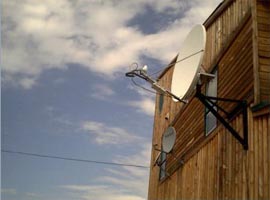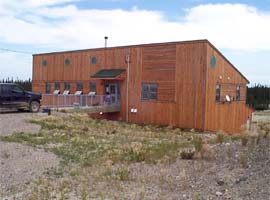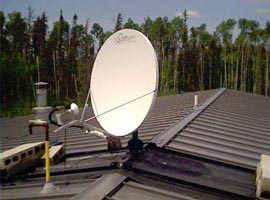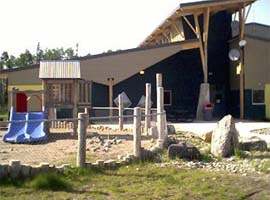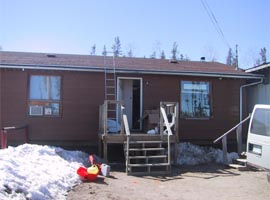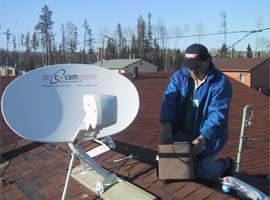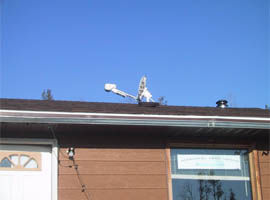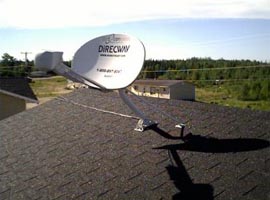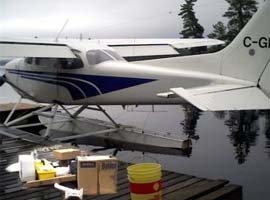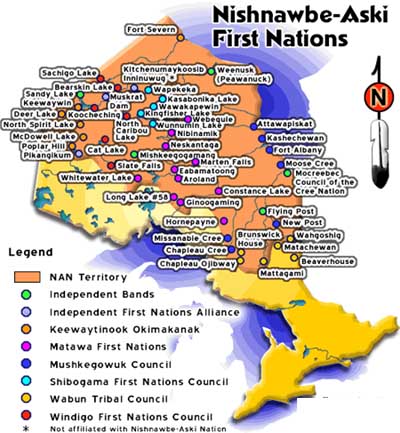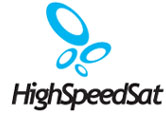 Cat Lake Long Dog Lake Landsdowne House First Nations - Ontario |
Satellite Internet conntects First Nations to broadband highwaysBroadband Internet has made communications and information access affordable and powerful. A course in Cyberspace for First Nations communities just getting into the game. The satellite Internet is the perfect way to sidestep big business and government control of information and the media. For the first time in history, First Nations have the opportunity of communicating directly with the Canadian public without having to spend millions of dollars.
Landsdowne House is starting down the Information Highway. First Nation SchoolNet connected school to the Internet last year with a two-way satellite. Teachers and students are using the connection during the day but connectivity has not migrated to the band office and other locations in the community. A variety of local crises have taken place over the last twelve months that have diverted attention away from connectivity issues. the ways in which the community is learning about the school's Internet connection and whether they are pressing to access it for their jobs and homes.
In April 2003, the EHSU awarded to Sixdion Inc., an Aboriginal company, and Telesat, a contract worth $2.3 million for high-speed satellite Internet service to 148 sites including hospitals, nursing stations, clinics, and treatment centres. In addition to making accessible the FNIHIS and the Home and Community Care module, access to other tools such as portals and virtual health libraries will be supported. The Sixdion/Telesat contract can be expanded to an additional 354 sites. The EHSU is also sponsoring an Aboriginal e-Health internship program through atclick.ca: The e-Health Solutions Unit . . . develops technology solutions to support primary health care within the various First Nations and Inuit communities within Canada. These technology solutions for health care are coordinated, deployed and supported through regional offices across Canada. The e-Health Solutions Unit is managing the recruitment, coaching and training of the interns
Hill thinks the Internet is the perfect way to sidestep big business and government control of information and the media. For the first time in history, First Nations have the opportunity of communicating directly with the Canadian public without having to spend millions of dollars. AThe Internet holds a lot of promise as the Great Equalizer for us. We don=t need lots of money or guns to bring about change - now we have communications.@ Hill thinks it is only a matter of time before everyone in Canada will be using the Internet in some capacity, whether it=s for entertainment, to conduct business or to get informed. Canada is one of the world leaders in the percentage of households who have Internet connections. AInternet access will become as commonplace as the telephone and the TV,@ says Hill. AAs a matter of fact, all three will merge, and that will happen shortly. The idea of a global public network is very compelling.@ ALet me tell you how I use it,@ says Hill. AIn my work, I make travel reservations, locate people and contacts, find information on companies I do business with, and research purchasing decisions by looking up product information. I also exchange documents with people that can be edited without having to retype them into the computer. That is something you can=t do with a fax. But the Internet is not only for work. AIn my personal life, I use the Internet to learn about my culture. I=m a Mohawk from Six Nations. There is this unbelievable links site on the Web that is jam packed with links to Iroquoian related Web sites.@ In addition he buys concert tickets, pays bills, finds out what he missed on TV. Once he even paid for a book on the Web and had it sent to his house. You can even apply for a loan on-line. Hill says that you don=t have to be a computer expert to use the Internet. Knapp: What is the Internet exactly? The Internet is a public computer network. Thousands of computers all over the world can communicate with each other and have connectivity 24 hours a day, 7 days week. It=s inexpensive. Anyone with a computer and modem, and a telephone line can have access to the Internet. Knapp: What can you do with the Internet? There are two things you can do with the Internet. One is to get information and the other is to share information. Here in Toronto, you can pay as little as $10.00 a month to an Internet Service Provider (ISP) to get connected to the Internet. The World Wide Web (the Web) is a series of computers connected to the Internet that serves information in the form of text, photographs, graphics, etc. If you have a fairly fast computer, you can get video and sound on your screen. Knapp: You mentioned sharing information? Yes, you can do that by posting information on a website. You design your site and your ISP provides space to host your website. Your information then becomes accessible to anyone on the Internet. Knapp: How do you see the Internet as beneficial to Native communities? What the Internet allows First Nations to do is to serve information to the public without it being filtered by the government, the publishing industry, the broadcasting industry or the print media. One of the problems we have as Indian people is that perspectives are controlled by people in the media - by people outside our communities who are not very familiar with who First Nations people are. The government holds much political power and takes it upon itself to decide much of what happens in those communities under the Indian Act, Indian Affairs, and so forth. The government and the Canadian corporate establishment use and manipulate information and the media to further their ends. In the past, they were the only ones who could afford to do that. The media establishment advances a particular perspective - one that is not always friendly to First Nations. Because the Internet is affordable, First Nations can now, for the first time, inexpensively distribute their own perspectives to the rest of the world. This can give the Canadian population more and better information about First Nations. The idea is that a better informed Canadian population will influence government decision-making about First Nations. Government needs to support solutions that work and relationships that are healthier. Knapp: How do First Nations connect to the Internet? Unfortunately, there are still many First Nations that are rural communities without adequate telephone services. If there is adequate telephone service, the next job is to find out if there are any local ISPs? In the city, when you call your ISP, it=s a local call. That=s why the Internet has seen phenomenal growth. But, for rural communities to connect to and ISP in the city, long distance charges would apply. Getting ISPs into rural communities is being developed now. Connectivity for remote communities is the last piece of the puzzle for First Nations. Knapp: Are there any barriers that First Nations organizations face in utilizing the Internet? People pay lip service to communications and information sharing, but when it comes to allocating financial resources or getting people trained, money gets a little tighter. It is true that sometimes resources are scarce. In order to realize the potential of computer networking - and the potential is great - managers need to make this stuff a practical priority. In rural communities, there=s the expense of telephone services and access to ISPs. Plus, you need someone in those communities with computer skills. We need to develop a strategy to get all of the First Nations in Ontario provided with Internet access. We need to do that together because that will take political will. There is research along those lines being done right now. Knapp: Who=s doing the research? FedNor has funded a study to get Internet connectivity in northern Ontario communities. Typically, if there aren=t enough customers to justify investment in equipment and telephone lines, businesses won=t go for it. That=s the situation now with the telephone companies. I believe it will take government assistance to eventually make it happen. There are tons of Canadian companies making a lot of money from extracting resources in those First Nations= territories and taxation dollars do flow back into the government. Many companies don=t feel it=s their responsibility to look after infrastructure development in those areas. Infrastructure has been a big role of government in the past. First Nations communities don=t have a lot of economic resources to put these things in place. Governments do have the wherewithal to make these kinds of things happen. Maybe government needs to play a bigger role there to make sure it happens. Knapp: Do you see the Internet as PR for First Nations? Yes, as public relations, but even more as a public education medium. It=s an especially good tool for communications with youth as well. Young people know what=s on the web and they know how to find information. It=s a great medium to bring Canadian youth up to speed about First Nations communities. You can also make a website interactive. There are a lot of children=s sites with games on the Web. When you want to interact with children, you play with them, and that=s how you teach them. Knapp: Can you see interaction with these websites and classroom curriculum? Yes. There are colleges and universities that now conduct courses on the Internet. You can communicate in seconds with any computer that=s thousands of miles away. You=re not limited by geography. Knapp: We=ve talked about interaction between First Nations and government, and First Nations and youth. What about between First Nations themselves? First Nations are hundreds or thousands of miles away from each other. If you put this infrastructure in place, you=re going to be able to communicate with each other in a fuller way. The Internet will never take the place of communicating person to person. It can be looked at as a supplement to that. We=ve used the telephone in the past. Now we have the Web, e-mail, and as soon as the telephone lines get fatter and cheaper more information will get through - that=s going to lead to video-conferencing. For the first time we have a global, public, inexpensive network to exchange information. We=re just seeing the tip of the iceberg. Knapp: How can the Internet bring business into First Nations= communities or improve economics? What are the cold hard benefits besides information sharing? The Internet is not affordable yet for many remote communities. Until prices drop, we need to be concerned with how much information you can get and the amount of people you can communicate with. And once you reach a certain threshold in telecommunications services and equipment costs, everything above that is dirt cheap. As far as other economic benefits, opportunities are developing. For instance, there=s a business in the Philippines that does keyboarding. Companies in North America ship them printed materials to input. Employees keyboard the information in and then they send back the electronic files though e-mail. This creates jobs in the Philippines from businesses on the other side of the world. Once you have access to the Internet you have a better understanding of opportunities available through telecommunications, including economic potential. Business on the Internet is poised for a take-off with the coming acceptance of electronic money. I just read about a prediction that business on the Internet will increase by ten times in the next four years. As for jobs? Work through the Internet is growing. Someone might write for a magazine via the Internet. A person in a northern community could research and write articles. Then, they could electronically send those articles to a magazine in any city without leaving their home. Knapp: So for you, the Internet is an opportunity for First Nations? The Internet is an opportunity for many things - not everything. The Internet can become a great equalizer for us because now we can communicate directly with individuals and with the public all over Canada and the world. After a couple of hundred years of impediments facing First Nations, barriers will begin to fall with our Internet use. The Internet will help us hack away at the limits of geography and corporate power
Information is power. But more than that, information is health.
It is welfare. It is education. It is employment. And it opens doors to the world. Holding open those doors to people across
Canada is our goal. |
|||||||||||||
|
Used with permission Keewaytinook Okimakanak |

